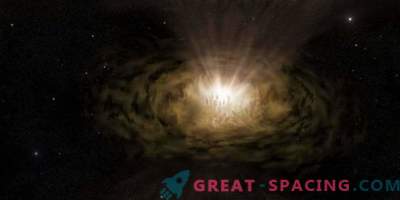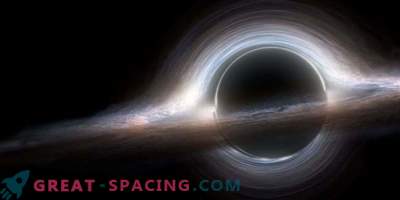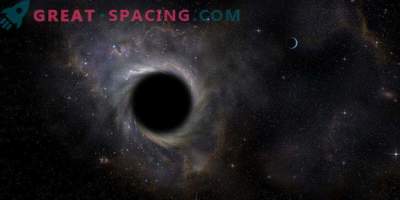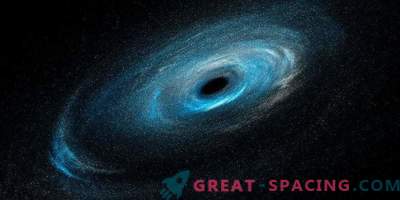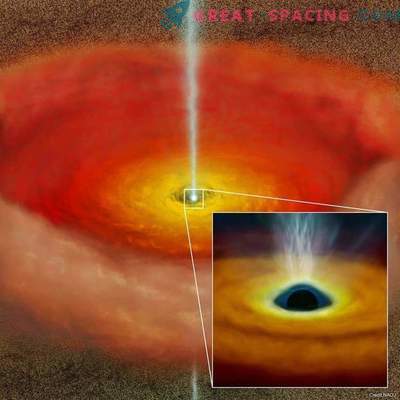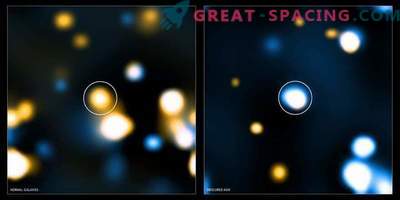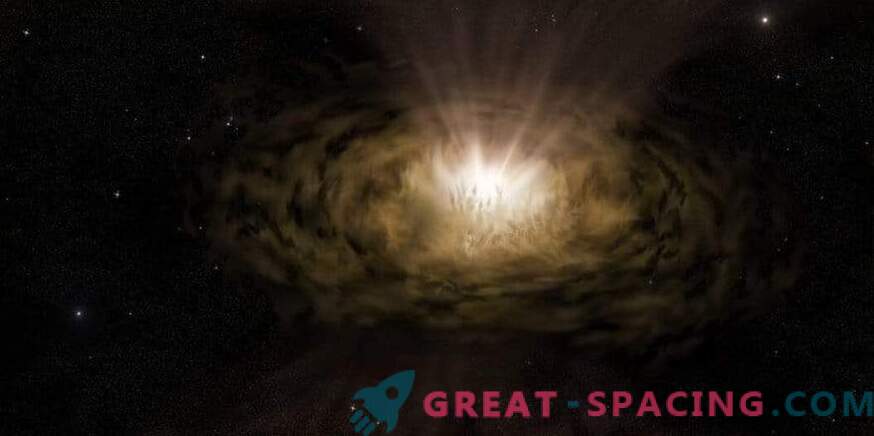
An artistic vision of how an active galactic core can look at close range. The accretion disk creates a bright light in the center. The wide line area is located just above the accretion disk and is lost in bright light.
Researchers at the University of California (Santa Cruz) believe that dust clouds, rather than double black holes, can explain the features found in active galactic nuclei (AGN).
Many large galaxies have AGN - a small central region, functioning from matter that falls into a supermassive black hole. When black holes actively feed, they are surrounded by a hot, fast-moving gas, called the wide-line region.
Emission from this gas is the best source of information about the mass of the central black hole and the process of its growth. But the nature of the gas is still poorly understood. The study of simple models led some scientists to conclude that many AGNs can hold not one, but two black holes.
The gas rotating in the direction of the galaxy's central black hole forms a flat accretion disk, and the superheated gas in the disk releases intense thermal radiation. Part of this light is recycled (absorbed and reemitted) by hydrogen and other gases, cycling over the accretion disk in the wide line. Above and beyond is the area of dust. As soon as the dust crosses a certain threshold, it is subjected to powerful radiation from the accretion disk. The researchers believe that the radiation is so intense that it removes dust from the disk, which leads to a compulsive outflow of dust clouds, starting from the outer edge of the wide line.
The effect of dust clouds on the emitted light is that it appears weaker and red. Thus, the earth's atmosphere also works, causing the sun to appear blurry and red at sunset. The inclusion of dust clouds in the model shows the reproduction of the features of the radiation of a wide line region.
Instead of a gas with a changing asymmetric distribution, which is difficult to explain, the gas is simply located in a homogeneous symmetric turbulent disk around a black hole. A much more natural explanation for the asymmetry is the presence of double black holes.
